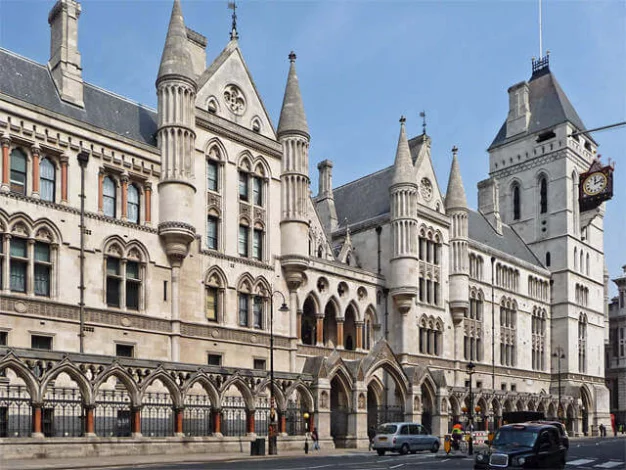Beneficial Interest in Property

Contact
Table of Contents
What does beneficial interest in property mean?
A beneficial interest in property gives someone the right to share the benefits of a property, even if they are not a legal owner. Specifically, it gives someone the right to:
- Live in the property
- A share of the rental income
- A share of the proceeds when the property is sold
The person with a beneficial interest is called a beneficial owner.
Beneficial interests are usually defined as a percentage, such as 40%. This means the beneficial owner is entitled to receive 40% of any sale proceeds or rent.
How can I get beneficial interest in property?
The law presumes that legal ownership and beneficial ownership are the same thing unless something happens to split the ownership. This can occur in three ways:
-
Express trust
The most common way to create a beneficial interest is through an express trust. This is where the legal owner signs a trust deed or written agreement declaring that the legal owner holds the property ‘on trust’ for someone else, the beneficial owner.
For example, a mother could declare that she holds the property on trust for her son, or a cohabiting couple could declare that they hold the property on trust for themselves in 70/30 percent shares to reflect their individual contributions toward the purchase price, rather than holding the property equally.
-
Resulting trust
Sometimes, the law will presume that a beneficial interest has been created if there has been a financial contribution. For example, if Person A pays part of the purchase price for a property that is registered in Person B’s name, the law will impose a ‘resulting trust’ where B holds the property on trust for the benefit of A relative to A’s contribution.
-
Constructive trust
A constructive trust arises when there is a common intention that someone has a beneficial interest in the property, even if they did not contribute to the purchase price. For example, if Person A moves in with Person B and pays the mortgage, or pays for a new kitchen, the court may decide that they behaved this way because there was a common intention to share the property. After all, it would be very unusual to pay someone else’s mortgage for no financial gain.
Is beneficial interest the same as legal ownership?
Beneficial ownership is not the same as legal ownership. Broadly:
- The legal owner is the ‘official’ owner of the land, whose name appears on the title deeds at HM Land Registry.
- The legal owner has a right of control over the property, which means they can decide to sell or lease it.
- The beneficial owner owns the ‘fruits’ of the property, including income and the right to occupy. Their name does not appear at HM Land Registry and a member of the public cannot find out who the beneficial owners are..
It is very common for a person to be both the legal and beneficial owner at the same time – but it is not always the case.
Why does there need to be a difference between legal and beneficial interest?
No more than four persons can be the legal owners of property in England and Wales. By law, those persons have equal ownership.
However, this may not reflect the reality of the situation, especially if one person has contributed more to a deposit (for example) and therefore wants more ‘interest’ in the property. By creating beneficial interests, you can achieve a fair result.
How do I change the beneficial interest of a property?
Assuming a deed of trust already exists, you can transfer the beneficial interest in property to another person with a deed of assignment. This changes the beneficial ownership of the property without changing the legal title, which is helpful if there is a mortgage, since changing the legal title would require the mortgage lender’s consent.
Special rules apply to joint tenancies. Joint tenants have equal rights to the whole property and co-own it together. To change the beneficial interest, you would first need to sever the joint tenancy and change the legal title to tenants in common. Multiple steps are required and there may be tax and other implications to consider. Specialist legal advice is a must.
How we can help
Whether you’re looking to claim a share, create a trust, or change ownership rights, our experienced property litigation solicitors are here to help with anything related to beneficial interest in property. Speak to a lawyer by:
- Filling in our online enquiry form below; or
- Calling us on 020 7485 8811
Share this article
Speak to us about Beneficial Interest in Property
Call us 020 7485 8811
Email us Send us an email and we’ll get back to you
The Court of Appeal provides further clarification on interests in property
Jones v Kernott
The Court of Appeal has handed down a detailed judgement in the case of Kernott v Jones that has gone some way to clarifying how the Court should deal with property disputes between non-married owners of property. This article summarises the complexities of the law and what needs to be shown to demonstrate an interest in a property before considering what changes Kernott v Jones brings and what needs to be done for further clarity.
Summary of the current law
Oxley v. Hiscock
The cases of Oxley v Hiscock (sole owner) and Stack v Dowden (joint owners) are the leading recent cases in this area of law. These cases both consider what gives rise to a beneficial interest in a property. Beneficial ownership is a legal concept that relates to who has an interest in a property. The concept of beneficial ownership was set out in the case of Lloyds Bank v Rosset. It is a different concept to legal ownership which is simply whose name property is in. Beneficial ownership relates to what the intentions of ownership were. For instance, a property may be purchased in one person’s name but it might have been clear that the property was for both people. On the other hand, a property may be purchased in the name of two people but it might be just for the benefit of one person. It is the beneficial owners who are entitled to occupy the property and who are entitled to receive the proceeds of sale.
The current law is far from simple, mired as it is in the concepts of trusts law and principles of ownership of land. In brief and basic summary:-
Express Trusts
- It is a basic and long-standing principle of law (see for instance Goodman v Gallant) that if there is a formal written declaration of trust (ie of the existence of and extent of beneficial interests in a property) then this is conclusive unless fraud or misrepresentation can be shown. If there is a clear and complete declaration of trust then that should be the end of the matter. Property purchasers should take note that perhaps it would be a good idea when purchasing properties together that your respective beneficial interests are clearly defined and declared.
Equity follows the law
Stack v Dowden
- Stack v Dowden confirms that equity follows the law – in other words, it is assumed that the legal ownership of the property reflects the beneficial ownership. It also confirms that this presumption is rebuttable (but see below for how difficult this can become).
Resulting Trusts
- Stack v Dowden confirmed that the old principle of resulting trusts (where it was presumed that a financial contribution towards a property resulted in a beneficial interest proportionate to that financial contribution) should not apply in quasi matrimonial cases. Interestingly a distinction is made between these quasi matrimonial type arrangements and non quasi matrimonial cases. In Laskar v Laskar, which was a case about a property beneficially owned by a mother and daughter and importantly was used primarily as an investment property, resulting trust presumptions did apply. The primary focus of this article is on quasi matrimonial property interests and hence I do not intend to consider resulting trusts in any more detail here.
Constructive Trusts
- Lloyds Bank v Rosset sets out the principle of a constructive trust (where a beneficial interest in a property can be found on the basis of a common intention construed either by evidence of direct discussions or from conduct together with a detrimental reliance on this intention). Unlike resulting trusts, constructive trusts remain an applicable concept in quasi matrimonial cases post Stack v Dowden.
- Evidence of direct discussions is usually a matter of factual dispute and ultimately the Court would have to make a determination on such issues. The knotty problems come with finding a common intention on the basis of conduct and with then quantifying the respective interests upon finding that there is a trust.
- Direct financial contributions towards the purchase of a property can be used to construe a common intention of joint beneficial ownership (this sounds very similar to the resulting trust discussed above, the difference being that there is more to the question than just whether or not a contribution has been made, the contribution is evidence of a common intention rather than of an interest. Furthermore, the construction of intention on this basis does not mean that the quantification of the interests would be in proportion). This can include regular and direct payments towards a mortgage but, significantly, not necessarily payments to an account from which the mortgage is paid.
- Indirect financial contributions were not approved as evidence of common intention in Lloyds Bank v Rosset and nor were non financial contributions. Whilst the recent cases do not deal specifically with this issue the case law suggests that the Courts find the position restrictive and that there are moves towards indirect contributions and non financial contributions being considered as evidence of common intention.
- Once a common intention is proven one still needs to show the second half of the equation before establishing a beneficial interest on the basis of a constructive trust, detrimental reliance. Detrimental reliance is what it says it is, a reliance on something to your detriment. Usually if you have shown a common intention on the basis of conduct then this will also show detriment. If an express agreement has been construed from evidence of discussions then the detrimental reliance may not be so immediately obvious and may need proving.
Existence of interest established – what now?
- So you have demonstrated that you have a beneficial interest in a property, that’s it then? No, there may then follow a dispute as to the extent of your beneficial interest.
- In Oxley v Hiscock an attempt was made to introduce the concept of fairness into these proceedings, with the proposed test for what should be the share of beneficial interests being what was fair.
- In Stack v Dowden Baroness Hale defined the Court’s task as “to ascertain the parties’ shared intentions, actual, inferred, or imputed, with respect to the property in the light of their whole course of conduct in relation to it”. And that the Court should not “abandon that search in favour of the result which the court itself considers fair”
This has the consequence not only of moving away from resulting trusts (as discussed above) but also of appearing to disapprove the Court’s approach in Oxley v Hiscock (a sole legal owner case) in relation to quantification.
- The issue of quantification of beneficial interests remains open to considerable judicial discretion, Baroness Hale confirms that “Each case will turn on its own facts”. The real impact of Stack v Dowden is that common intention constructive trusts are now much more likely to be found by the Courts and that quantification may then be considered on the whole course of conduct. More than just direct financial contributions can be considered in relation to quantification (see for instance Abbott v Abbott)
There are other principles that can be argued in relation to establishing an interest in a property, notably proprietary estoppel where someone has encouraged an expectation of an interest in property and the other parties has relied on this to their detriment. Applications can also be made in relation to rights over property on a number of different basis and acts of parliament.
Kernott v Jones – Clarification?
This case, heard at the Appeal Court level, considered the meaning of the search for “the parties’ shared intentions, actual, inferred or imputed” and the imposition of the Court’s views. Kernott v Jones provides some clarification as to the interpretation of inferring and imputing intention and imposing the Court’s views and as to what should be considered when doing this.
The facts of the case were that the parties jointly owned a property, purchased in 1985 using Jones’ deposit and a joint mortgage. Kernott then primarily paid for a small further loan used to build an extension. The parties shared household costs and mortgage repayments. In 1993 the parties separated and Jones, with the two children, remained at the property and paid for the property outgoings. A separate property was purchased by Kernott using the proceeds of the sale of a jointly owned policy. The parties agreed (eventually) that at the point of separation, their beneficial interests were equal. The issue was whether they subsequently changed. Importantly, it was common ground that there had been no discussion as to any change in beneficial interests.
The Court of Appeal considered whether or not and in what circumstances the Court could “impute” or “infer” a common intention to vary equal beneficial interest in a property and how to quantify such imputed or inferred interests. The Court of Appeal found that there was no evidence to infer a common intention to vary the beneficial interests since separation and that consequently, the beneficial interests remained equal, as they had been in 1993.
It is important to look at the definitions of impute and infer. Although the words were used by Baroness Hale, it was Lord Neuberger in Stack v Dowden who proposed a definition:-
“An inferred intention is one which is objectively deduced to be the subjective actual intentions of the parties in the light of their actions and statements”
“An imputed intention is one which is attributed to the parties, even though no such actual intention can be deduced from their actions and statements, and even though they had not such intention”
This suggests that the difference is that where inferred, there was an intention that becomes clear on considering the facts whereas with imputing, there was no intention but the Court is attributing one to the parties. Confusingly, the Court also confirmed in Stack v Dowden that its views must not be imposed.
In the High Court in Kernott v Jones, the Judge felt that an intention to vary the beneficial interests could be inferred or imputed on the basis of the parties’ conduct. He then considered the quantification of the beneficial interests and imputed a share on the basis of what was fair and just, considering that imputing shares can only be on this basis if there is no way of deducing this from conduct.
The Court of Appeal (with one Judge dissenting) did not agree with the High Court Judge and instead found that there was no evidence to infer a common intention to vary the beneficial interests. Consequently, the Court of Appeal did not need to make a decision on the imputation of the shares but the Judges did comment on this issue, expressing different views.
Lord Justice Wall indicated that if the common intention to vary could be found then the imputation of the new shares of beneficial interest was one of judicial discretion and that the Court could use the Oxley v Hiscock test of what it considers fair when there is no evidence of discussions.
Lord Justice Rimer considered the meaning of impute and impose, he said that:-
“the Court could and would presumably only consider so imputing an intention to them if they had drawn a blank in its search for an express or an inferred intention but wanted to impose upon the parties its own assessment of what would be a fair resolution”
This seems to be the rationale that was used in the High Court but it is specifically rejected by Lord Justice Rimer who found that this approach was rejected in Stack v Dowden. Lord Justice Rimer concludes that the Court in Stack v Dowden did not intend to enable the Courts to impute an intention when there was no express or inferred intention. He also felt, in contrast to Lord Justice Wall, that the fair and just test of Oxley and Hiscock had been rejected in Stack v Dowden.
Lord Justice Jacob agreed with the High Court Judge and felt that the parties intentions could be found to have altered over the years, on the basis of their conduct. He indicated that the fair and just test was a part of the test but not the whole test as to quantification.
What can we draw from the decisions and judgments in Kernott v Jones?
- Whilst the leading judgment in Stack v Dowden did not define “impute” and “infer” the definitions proposed by Lord Neuberger have been approved.
- The principle of equity following the law espoused in Stack v Dowden is a very difficulty principle to rebut, particularly in joint ownership cases.
- Moving out of a property and providing little financial contribution towards a jointly owned property for a number of years is not sufficient evidence to infer a change in intention (although, given that it was enough for the District Judge, the High Court Judge and one Appeal Court Judge, perhaps one can “infer” that it is close to the boundary).
- The indications from the judgments are that imputation cannot be used to decide whether there was a common intention (presumably as this would be imposing).
- The issue of imputing shares remains unanswered, with the three Appeal Court Judges reaching different conclusions (one should note that the views expressed by the Judges are just that, as the Court found by majority that there was no common intention to vary the beneficial interests it did not have to make a binding legal decision on quantification).
- The circumstances in which the Courts can take into account what it feels is fair and just in these proceedings also remains something of significant judicial dispute. The High Court Judge felt that this test could be used to quantify shares when there was no other evidence, Lord Justice Wall seems to agree with this, Lord Justice Rimer concluded that there was no such test and that it was rejected in Stack v Dowden and Lord Justice Jacob the fair and just test formed just part of the Court’s consideration.
How can you protect your beneficial interest in property?
Under the Land Registration Act 2002, a restriction can be entered in the register of any property or land by anybody who has a sufficient interest in it. As well as safeguarding the interest of the beneficiaries of the land, a restriction may also control or limit the way the property or land is dealt with.
Hallman v Harkins
In the case of Hallman v Harkins [2019] UKUT 245 an application was made by Tracy Harkins to the Land Registry to enter a restriction against the registered title to a property in Bootle (“the Property”) to protect her beneficial interest which she claimed to have. She had shared the Property with her partner of 13 years, Laurence Hallman. They had separated in 2016 and Mr Hallman was the sole registered proprietor of the Property. Mr Hallman objected to the application.
First-Tier Tribunal Conclusions on beneficial interest
The dispute was referred to the First Tier Tribunal (“FTT”) under section 73(7) of the Land Registration Act 2002. They concluded that parties had has a common intention from January 2013 that Mr Harkin should have a beneficial interest in the Property. As a result, it directed the Chief Land Registrar to give effect to her application for a restriction to be entered on the register.The FTT also went a step further and quantified Mr Harkin’s share on the basis that they had been invited to do so by the parties. By an arithmetical calculation based on the duration of the couple’s engagement relative to the length of their relationship, it then concluded that her beneficial interest in the Property was 35% of the whole.
Appeal Findings
Permission to appeal was granted by the Upper Tribunal on two grounds:
- The FTT’s conclusion that the couple had pooled their resources (which Mr Hallman argued was reached without regard to the relevant parts of the evidence); and
- The FTT’s approach to the quantification of Ms Harkin’s beneficial interest (which Mr Hallman argued was arithmetically incorrect, but which is also open to the more fundamental objections that it is contrary to principle and beyond the FTT’s jurisdiction)
On appeal, Martin Rodger QC made the following findings:
- The FTT was entitled to find that Mr Harkin has a beneficial interest which should be protected by a restriction;
- The FTT had no jurisdiction to determine the extent of that beneficial interest and its conclusion is not binding on the parties; and
- In any event, the FTT’s view that Ms Harkin’s interest was 35% was based on an incomplete assessment of the evidence and was wrong in principle.
Often where such disputes arise at the FTT stage, it is common for parties to issue proceedings in Court and for the FTT proceedings to be stayed pending the resolution of the Court proceedings. The Court can determine the extent of a party’s beneficial interest and therefore in the interest of costs, parties tend to pursue such claims through the Court route. Naturally, if a determination is made in Court and a party is found to have a beneficial interest, it follows that a restriction should be registered.This case is, however, an interesting reminder of the FTT’s jurisdiction when it comes to beneficial interest claims as often these cases can arise from disputes relating to the registration of restrictions.
Conclusion
The law in relation to beneficial ownership of property remains complex, confusing and capable of interpretation in many different ways. Stack v Dowden and Kernott v Jones have provided some welcome clarification but there remain numerous questions.
Kernott v Jones has amplified the equity follows the law principle and confirmed that the bar is set high for anyone wanting to rebut this presumption in joint ownership cases. The case has also perhaps undermined arguments about the imputation of a common intention and possibly also about the imputing of the respective shares.
Contact our Camden or Hampstead Solicitors for more information about our other services including advice on property in the event of divorce.
Related InsightsVIEW ALL
- 4.12.2024
Security of Tenure
Security of tenure gives business tenants the right to stay in their property after the lease ends and request a...
Read more - 4.12.2024
Section 25 Notices
A Section 25 notice plays an important role in commercial leases, letting landlords and tenants know what’s next when a...
Read more - 4.12.2024
Section 21 Notices
Guide to section 21 no-fault evictions Evicting tenants is never easy but under the no-fault eviction process, it should be less...
Read more - 18.11.2024
Rent Repayment Orders
Guidance for Rent Repayment Orders (RROs) for Landlords in the UK Rent Repayment Orders (RROs) are legal orders requiring a...
Read more - 13.11.2024
Evicting a Tenant
How to evict a tenant: Guidance for landlords Evicting tenants is rarely straight forward. It is a challenging and complex...
Read more - 16.10.2024
Managing Litigants: Court Powers and Defendant Options
How can the court control a litigant? Most people wish to live out their lives without the need to face...
Read more - 15.10.2024
How do you determine a boundary?
Whether the boundary dispute relates to a rear garden boundary or whether it relates to a driveway, the issue of...
Read more - 14.10.2024
Can You Challenge a Restrictive Covenant?
Challenging a restrictive covenant! Is it obsolete? It is well known that section 84(1) of the Law of Property Act 1925 allows...
Read more - 23.1.2024
Freehold Service Charge Disputes
Service Charges & the Leasehold and Freehold Reform Bill The Leasehold and Freehold Reform Bill was introduced to Parliament on 27...
Read more - 23.1.2024
Know your Rights (of Way)
If you have a question or concern over a right of way on your property, it is important to seek...
Read more - 23.1.2024
Party Wall Etc Act 1996 v Common Law
The case of Power & Kyson & Shah [2023] EWICA Civ 239 The case of Power & Kyson & Shah [2023] EWICA Civ 239...
Read more - 27.10.2023
The Building Safety Act 2022
Introduction to the Building Safety Act 2022 This much awaited Building Safety Act 2022 was introduced into Parliament on 5th May 2021 as...
Read more - 22.8.2023
Reasonableness of Service Charges
Reasonableness of Service charges under the Landlord and Tenant Act 1985 It is well known that the relevant costs that a...
Read more - 5.2.2023
Japanese Knotweed: Knot in my backyard again!
Huge legal bill after selling home with Japanese knotweed Many will have read the recent case in which a furniture...
Read more - 9.6.2022
TOLATA Claims
What is a TOLATA claim? A TOLATA claim is a legal process under the Trusts of Land and Appointment of...
Read more - 8.6.2022
Right to Light Explained
What is the Right to Light? The right to light is a type of ‘easement’ – a legal right giving property...
Read more - 8.6.2022
The Dangers of Rent-to-Rent
What is Rent-to-Rent? Rent-to-Rent refers to the practice of landlords letting a whole property to a tenant (usually a limited...
Read more - 5.10.2021
Buying a Property with a Party Wall Agreement
Introduction to buying a house with a party wall agreement Buying a property can already be stressful, but finding out...
Read more - 26.6.2021
The Risks Of Buying Properties Off Plan!
Buying Property Off Plan The Daily Mail reported that 300 families a week have to move into shoddy newly built homes....
Read more - 11.10.2019
End to No Fault Evictions
Everything you need to know about section 21 reform The government is planning to overhaul renter’s rights in the UK,...
Read more - 18.7.2019
New Builds, Poor Standards!
Allegations of Poor Standards and Customer Care in New Builds This week’s Dispatches programme examined allegations of shoddy standards,...
Read more - 10.4.2019
Tenant Fees Act 2019
Tenant Fees Act 2019 comes into effect On 12 February 2019, the Tenant Fees Bill received Royal Assent and comes into effect on...
Read more - 23.9.2018
HMO Licenses to be Extended
Changes to HMO Licenses In an attempt to raise standards for all relevant Houses in Multiple Occupation (HMOs), changes are...
Read more























